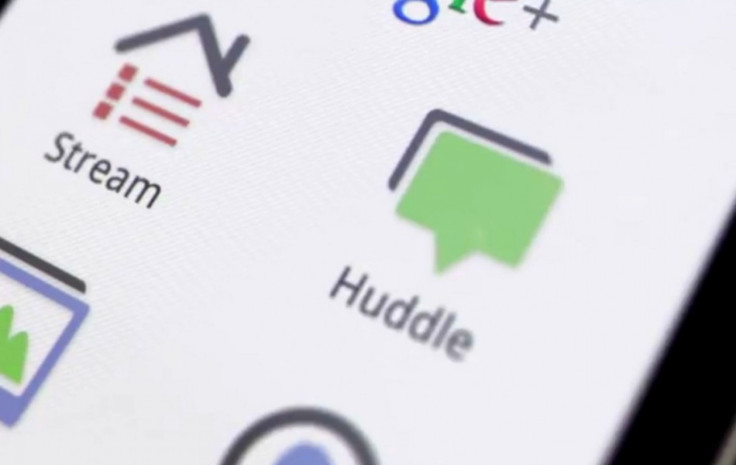Google attacks Facebook with Google+ but it's all about Stream, Sparks, Huddle, Hangouts and Circles really (VIDEO)

Internet search engine giant Google has launched an offensive on Facebook by taking the wraps off its very own social networking service (SNS) called Google+.
Unlike other social networking products and/or services Google has launched in the past, Google+ is its most comprehensive and impressive ever.
We'd like to bring the nuance and richness of real-life sharing to software. We want to make Google better by including you, your relationships, and your interests. And so begins the Google+ project, Google said in a blog post.
Google+ boasts of some nifty, innovative and important features such as Circles (it allows you to group contacts together in various social circles and share things only with the particular circles you chose), Stream (an alternative to Facebook's news feed, it's a hub of personalized content), Sparks (similar to Stream but related to one's specific interest - similar to Twitter hashtags) and Hangouts (video chat rooms).
Google+ also has a mobile element to it, focusing on text updates, photo and video sharing, and location.
Google+ was reportedly being developed under the codename Emerald Sea and hundreds of employees were involved in the project, which reportedly was a key focus of CEO Larry Page.
We're transforming Google itself into a social destination at a level and scale that we've never attempted - orders of magnitude more investment in terms of people than any previous project, said Vic Gundotra, who leads Google's social efforts.
However, industry watchers are skeptical about the success of Google+ as they feel Google+ is simply not in Google's DNA.
The company also did not taste success with its past social networking projects.
Take for example, Google's social networking site Orkut. Orkut debuted in 2004, long before Facebook showed its face to the world. However, except for garnering a massive market share in Brazil and India, Orkut has vanished into oblivion.
Google's next shot at social networking came in the form of Open Social. Open Social launched in 2007 with the aim to create an open standard for social network applications. But as Facebook stayed clear away, Open Social became a closed chapter.
Undaunted, in 2009 Google waved in the social-based communications system Wave with a bang. However, the complexity of the product failed to attract users and last summer Google waved it goodbye.
In 2009, Google also launched a social networking product called Buzz. Initially it caused quite a stir but a privacy glitch that revealed confidential information of users to the public led to its early death.
However, Google+ could live longer than its predecessors because some of its features represent a dramatic sea-change in the way people interact in the social networking world.
For instance, the Google Stream and Sparks, though on the same lines as the Facebook feed represent much more. While Stream keeps track of your social life with friends, family, colleagues and acquaintances - any item they share be it a link, picture, or comment, it will appear in your stream - Sparks pulls in stories, videos and other cool content relating to your specific interest. According to Google, the content in Sparks stream is different from the results you'd get if you put the same term into the search engine.
Google+ also feaure Huddle, which allows for group chatting on mobile devices.
Other useful features are Hangouts (it lets you find others who are hanging out on the Web and engage in a video chat with them) and Instant Upload option that automatically uploads all photos and videos from your phone to your profile. From there, you can decide who to share that content with.
However, the centerpiece of Google+ is probably Circles. It offers a simple means of organizing one's social network by grouping contacts into anything you can possibly imagine - family, friends, co-workers, etc.
The groups can be formed by dragging the contact's picture/photo over a circle that represents the group (a group of people can also be dragged over a circle!)
With Circles, Google feels it has hit the sweet spot as the biggest problem of sharing that has hounded social networking sites has been solved.
With Facebook I have 500 friends—my mom's my friend, my boss is my friend, Shimrit Ben-Yair, the product manager in charge of the social graph, told Ars technica. So when I share on Facebook, I overshare. On Twitter, I undershare, because it's public. If Google hits that spot in the middle, we can revolutionize social interaction.
Agrees Gundotra. Networks are for networking, said Gundotra. Circles are for the right people.
The circles idea makes a lot of sense, said Ezra Gottheil, an analyst at Technology Business Research. It's smart, and while you can do something similar in Facebook, it's not Facebook's main thing. It's not as easy to do.
The service is currently in a trial field period and only those invited can get to use it.
Watch the cool video on Google+ below:
© Copyright IBTimes 2025. All rights reserved.



















